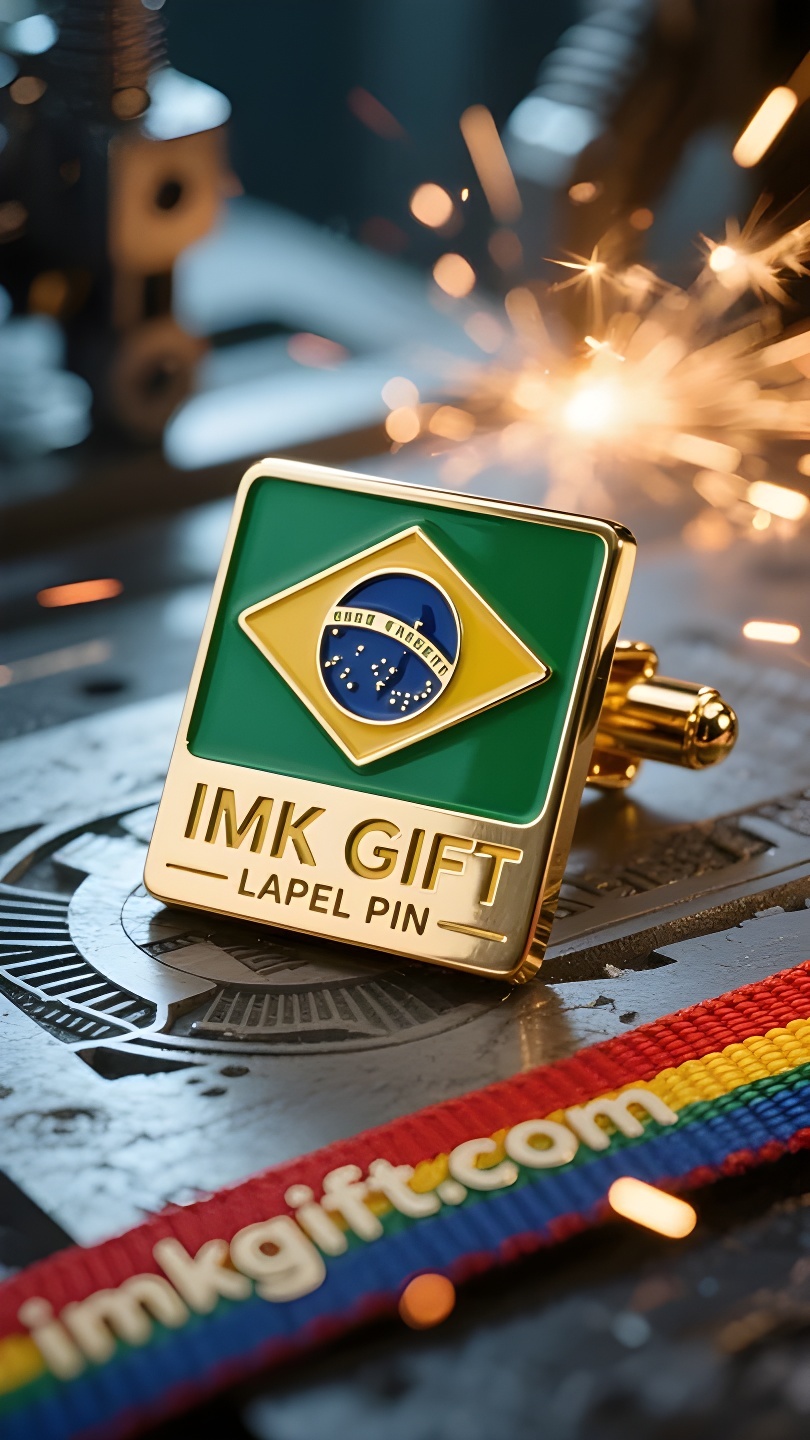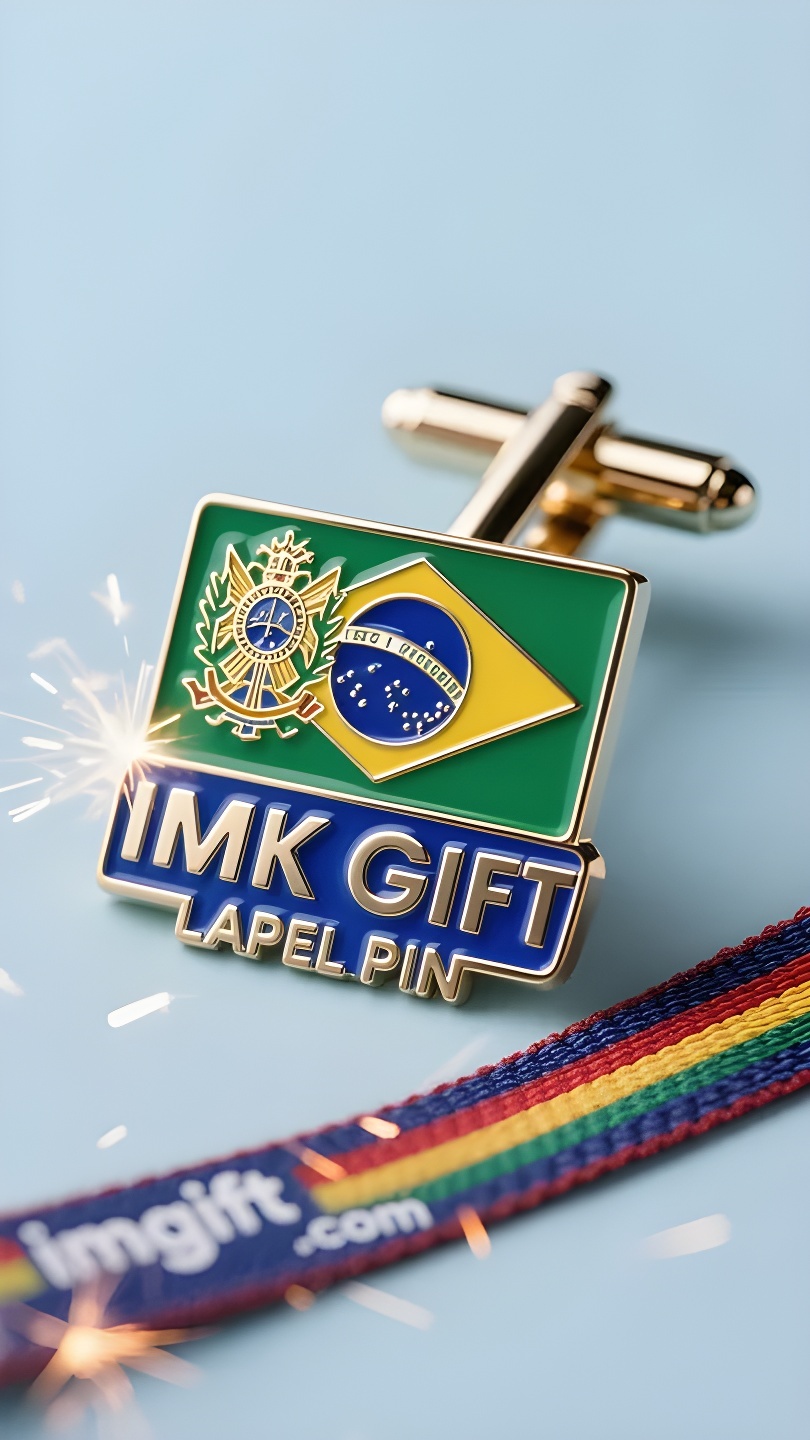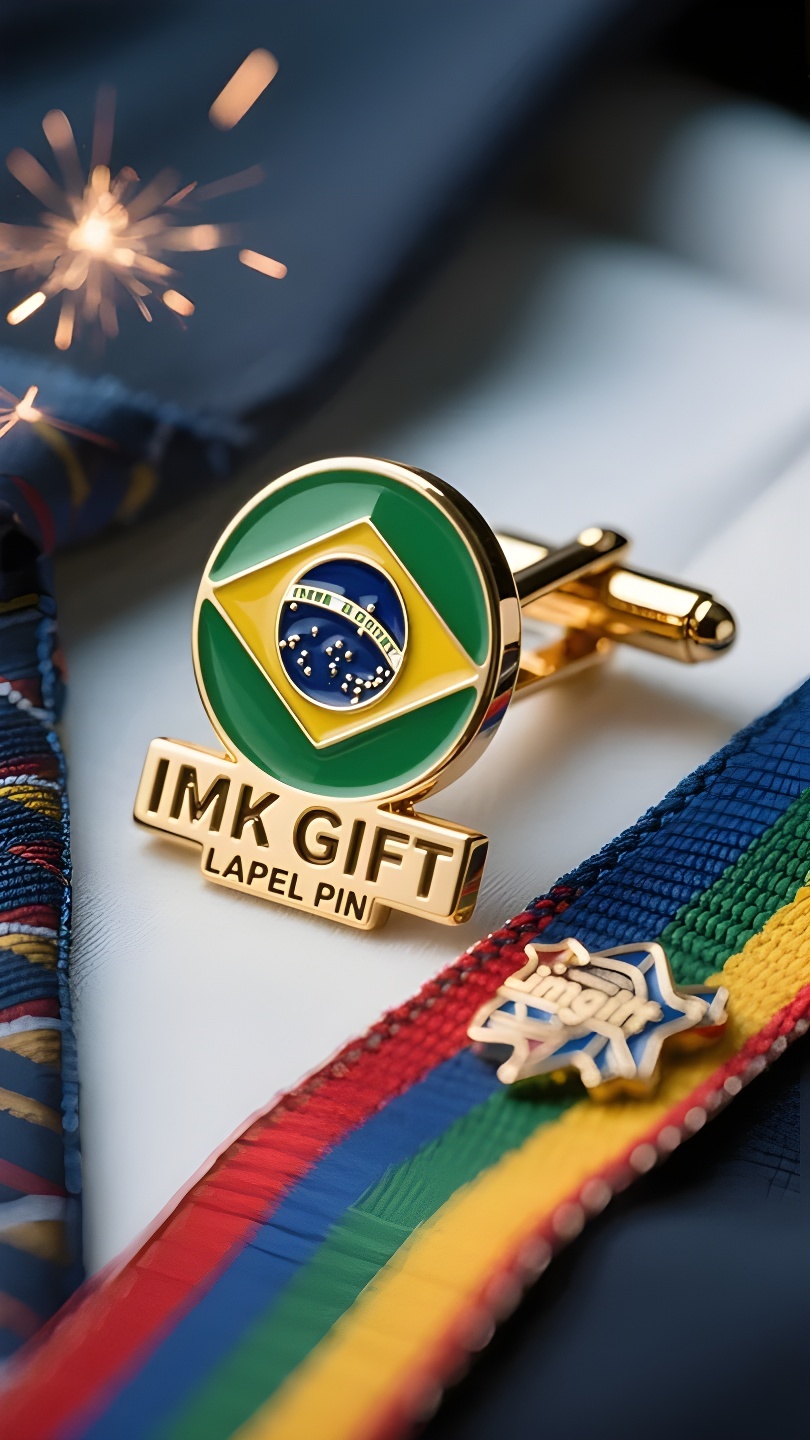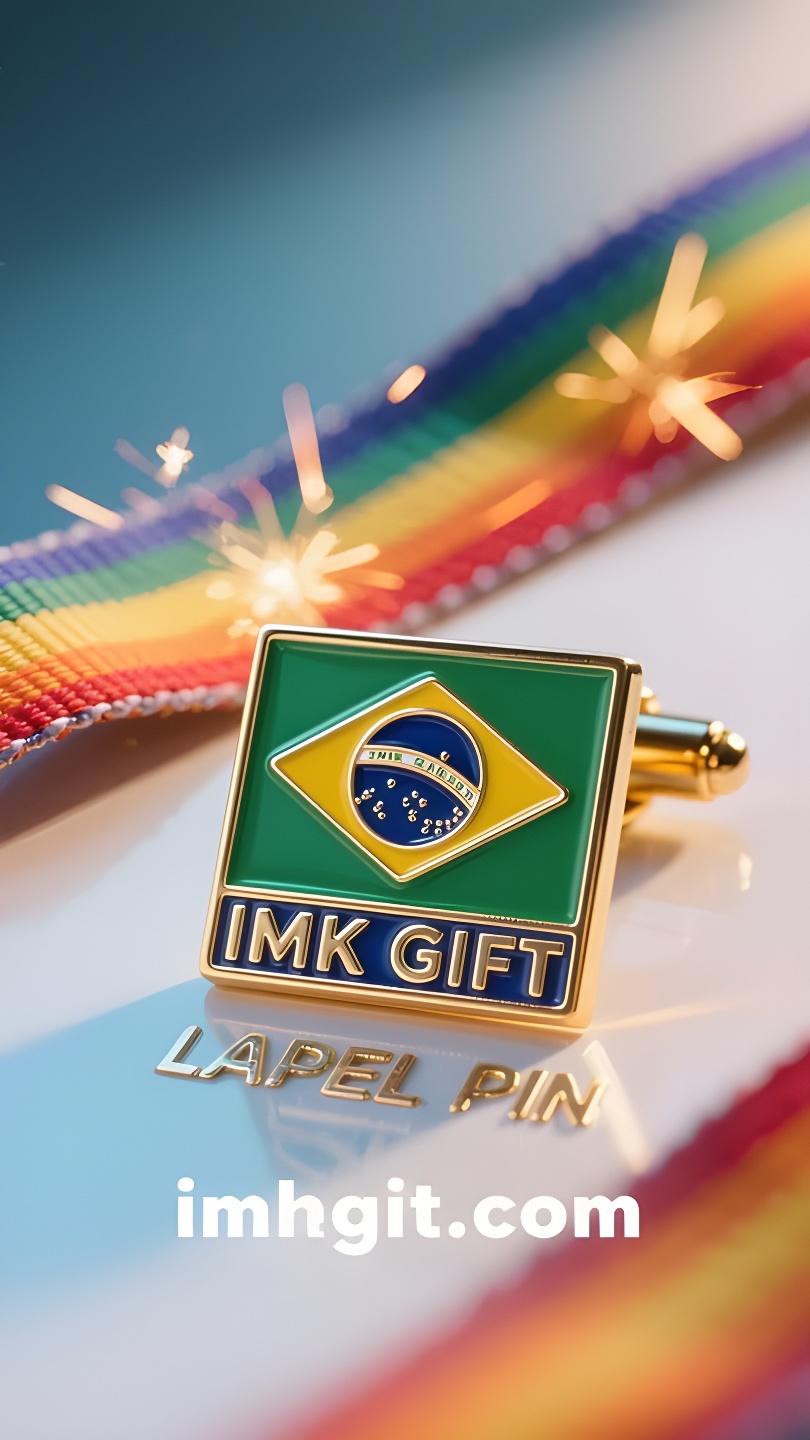in985-Pequenas-Estrelas-O-Ideal-de-Pátria-e-Pátria-nas-Abotoaduras-Brasileiras
▼
Todo mês de novembro, o “Dia da Declaração da República” no Brasil desperta as memórias de liberdade e mudança da nação. Este mês, enquanto as pessoas olhavam para o globo celeste na bandeira nacional e para a folha de café no emblema nacional, um acessório que simboliza a unidade foi repetidamente mencionado: as abotoaduras com o emblema nacional. Este ornamento de metal, inspirado no emblema nacional brasileiro, não é apenas uma marca de identidade para a elite, mas também carrega uma epopeia em miniatura do espírito nacional. No globo celeste azul no centro da bandeira nacional, 27 estrelas estão unidas para formar a constelação do Cruzeiro do Sul, o que implica a igualdade e a prosperidade de todos os estados da federação; e no centro do emblema do escudo reproduzido nas abotoaduras do emblema nacional, cinco estrelas apontam para o alvorecer da queda da monarquia em 1889. Quando esta abotoadura é presa à camisa, a imagem de folhas de café e folhas de tabaco entrelaçadas em ambos os lados do escudo emerge discretamente – elas não são apenas a pedra angular da decolagem econômica do Brasil, mas também implicam a relação simbiótica entre a luta pessoal e a força vital do país. Ainda mais intrigante é a espada no topo do emblema nacional. No pequeno espaço entre as abotoaduras, uma lâmina afiada vertical perfura a estrela de cinco pontas, que não é apenas uma comemoração da glória militar, mas também um aviso aos contemporâneos: a verdadeira força vem da contenção. Assim como “ORDEM E PROGRESSO” está gravado na fita da bandeira nacional, os portadores de abotoaduras recebem uma dupla missão: conter o fio com razão e iluminar o caminho das estrelas com diligência. Quando os brasileiros usam essas abotoaduras em novembro, eles não estão apenas abotoando os punhos de seus colarinhos, mas também derretendo as estrelas do globo celeste e a abundância do escudo em uma bússola na palma de suas mãos. O que um pequeno pedaço de metal reflete não é apenas a glória da história, mas também a visão do futuro que todo cidadão deve proteger.
Every November, Brazil’s “Declaration of the Republic Day” awakens the nation’s memories of freedom and change. This month, when people gaze at the celestial globe on the national flag and the coffee leaves in the national emblem, there is always an accessory that symbolizes unity that is repeatedly mentioned – the national emblem cufflinks. This metal ornament based on the Brazilian national emblem is not only an identity label for the elite, but also a miniature epic of the national spirit. On the blue celestial globe in the center of the national flag, 27 stars are linked together to form the Southern Cross, implying the equality and prosperity of the federal states; and in the center of the shield emblem reproduced by the national emblem cufflinks, five stars point to the dawn of the overthrow of the monarchy in 1889. When this cufflink is fastened to the shirt, the image of coffee leaves and tobacco leaves entangled on both sides of the shield quietly emerges – they are not only the cornerstone of Brazil’s economic take-off, but also imply the symbiotic relationship between personal struggle and the lifeblood of the country. Even more intriguing is the sword at the top of the national emblem. In the small space of the cufflinks, the vertical blade pierces the five-pointed star, which is not only a commemoration of military glory, but also a warning to contemporary people: true power comes from restraint. Just like the words “ORDEM E PROGRESSO (Order and Progress)” engraved on the national flag ribbon, the cufflink wearer is given a dual mission – to restrain the edge with reason and illuminate the star track with diligence. When Brazilians wear these cufflinks in November, they are not only fastening the collar of their clothes, but also melting the stars on the celestial globe and the abundance in the shield into a compass in the palm of their hands. The small inch of metal reflects not only the glory of history, but also the future vision that every citizen should protect.
每年11月,巴西的“共和国宣言日”都会唤醒国民对自由与变革的追忆。这个月,当人们凝视国旗上的天球仪与国徽中的咖啡叶时,总有一件象征团结的配饰被反复提及——国徽袖扣。这枚以巴西国徽为原型的金属饰品,不仅是精英阶层的身份标签,更承载着民族精神的微缩史诗。
国旗中央的蓝色天球仪上,27颗星连缀成南十字星座,暗喻联邦各州的平等共荣;而国徽袖扣复刻的盾徽中央,五颗星则指向1889年推翻帝制的黎明。当这枚袖扣紧扣于衬衫时,盾徽两侧被咖啡叶与烟草叶缠绕的意象便悄然浮现——它们既是巴西经济腾飞的基石,也暗示着个人奋斗与国家命脉的共生关系。
更耐人寻味的是国徽顶端的那柄剑。在袖扣的方寸之间,垂直的利刃穿透五角星,既是对军事荣耀的纪念,也是对当代人的警示:真正的力量源于克制。正如国旗绶带上镌刻的“ORDEM E PROGRESSO(秩序与进步)”,袖扣佩戴者被赋予双重使命——以理性约束锋芒,用勤勉照亮星轨。
当巴西人在11月佩戴这枚袖扣时,他们扣住的不仅是衣领袖口,更是将天球仪上的星辰、盾徽里的丰饶,熔铸成掌心的指南针。方寸金属映照的,从来不只是历史荣光,更是每个公民应当守护的未来图景。
▼
Contact Us
📞 Tel: +0086-760-85286839
📧 Email: sales3@imkgift.com








